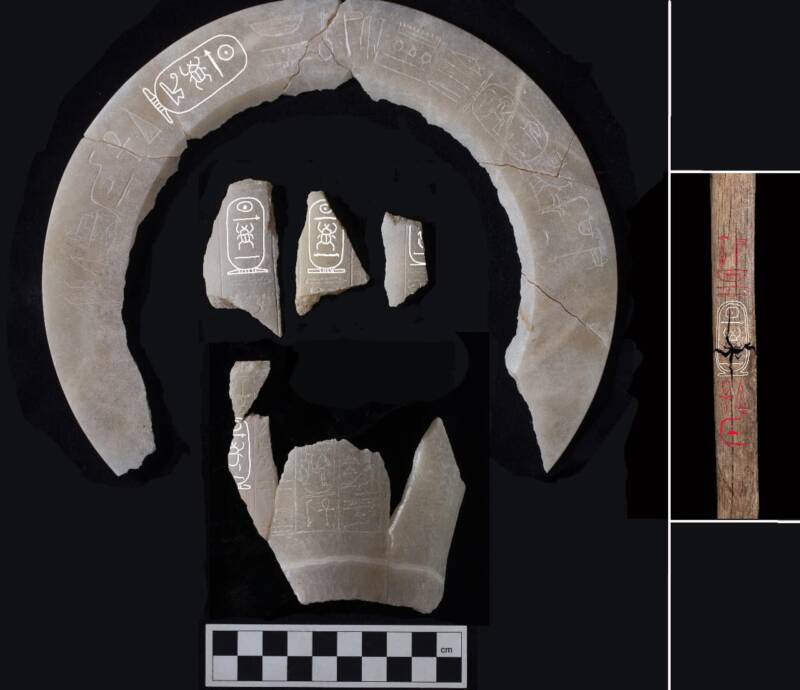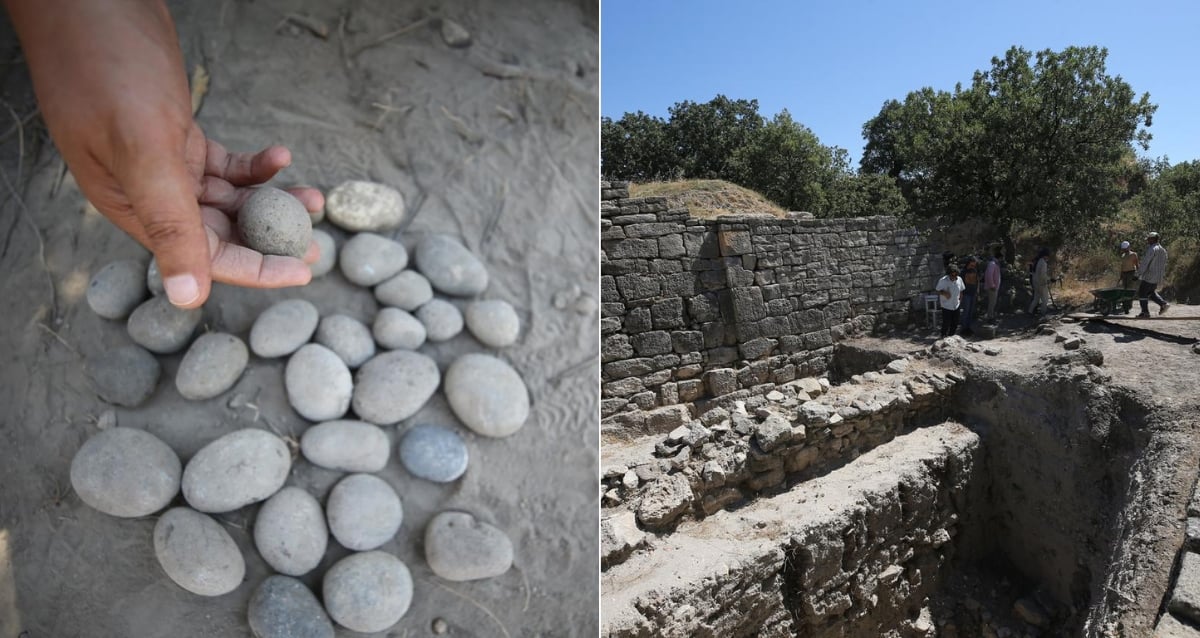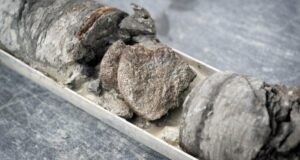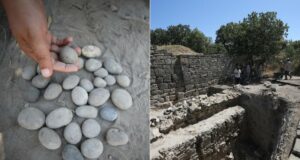“Unearthed Secrets: The Shocking Discovery of Pharaoh Thutmose II’s Hidden Tomb Near Luxor!”
“The artifacts found within the tomb provide critical insights into the history of the region and the reign of Thutmose II. Notably, this discovery includes funerary furniture belonging to the king, marking the first-ever find of such items, as no funerary furniture of Thutmose II exists in museums worldwide,” he continued.

Egyptian Ministry of Antiquities and TourismVarious artifacts recovered from the tomb, with inscriptions referring to Thutmose II as the “deceased king.”
Mohamed Abdel Badi, head of the Egyptian Antiquities Sector and co-leader of the excavation, noted that the tomb was found in a poor state of preservation due to flooding that occurred shortly after the death of Thutmose II.
“Water inundated the tomb, damaging its interior and necessitating extensive restoration work by the archaeological team to recover fallen plaster fragments,” he said. “Preliminary studies suggest that the tomb’s original contents were relocated to another site during ancient times after the flooding.”
Given that Thutmose II’s body was discovered in a different location, at an archaeological site known as the Deir el-Bahari Cachette, Badi’s theory seems likely. As for how the tomb’s contents were moved, Dr. Piers Latherland, head of the British side of the mission, offered an explanation.

Egyptian Ministry of Antiquities and TourismWater damage and recovered plaster bits in the tomb.
Latherland noted that the tomb’s simple layout was something of a prototype for later royal tombs of the 18th Dynasty: “It features a plastered corridor leading to the burial chamber, with the floor of the corridor elevated approximately 1.4 meters (4.59 feet) above the burial chamber’s floor. The elevated corridor is believed to have been used to relocate the tomb’s contents, including the mummy of Thutmose II, following the flooding.”












